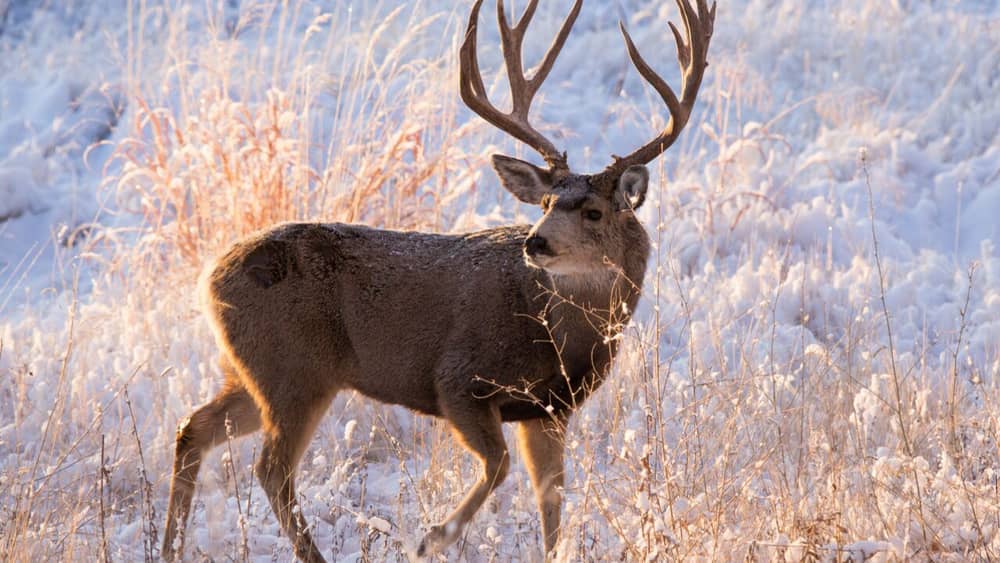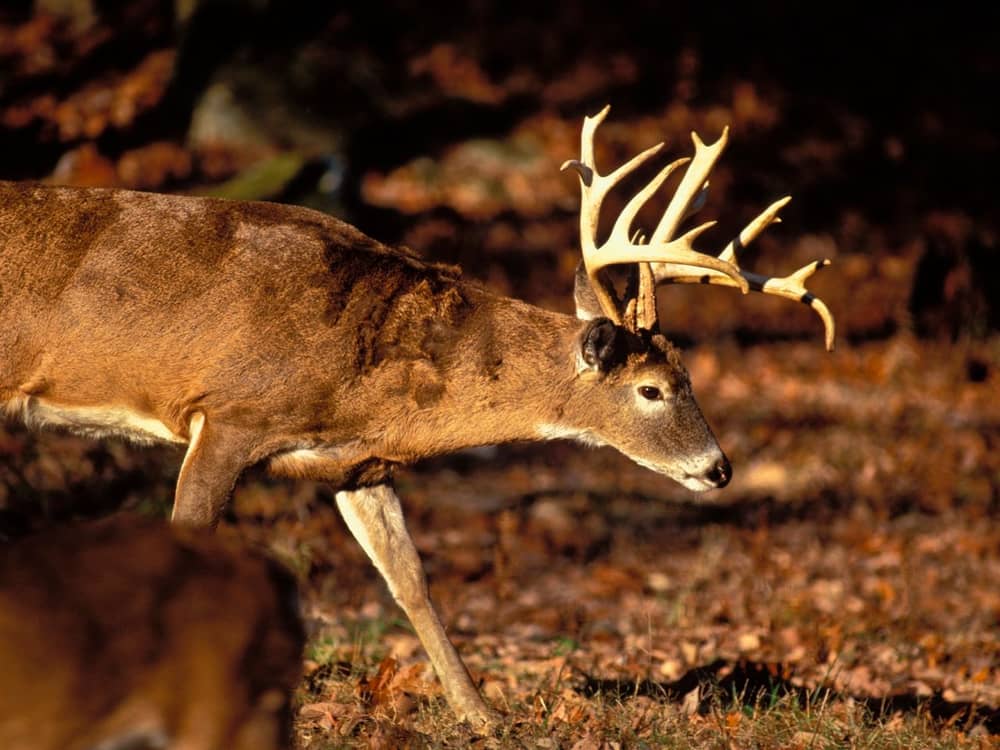Weather conditions might affect deer. Every little variation in air pressure can have a big impact on how a deer moves. So, how much wind is too much for deer hunting?
In actuality, deer are wary animals. They can flee in the opposite way at the slightest noise or movement. Hence, you should make sure you’re taking all necessary precautions when deer hunting to prevent spookiness.
The direction and intensity of the wind can make the difference between a successful and unsuccessful day of deer hunting.
Deer are more likely to get startled if you go hunting on a windy day. Deer may become aware of your presence due to the wind’s ability to rustle leaves and move branches. Furthermore, the wind can convey your scent, letting deer know you’re there before you ever notice them.
How much wind is too much when hunting deer? Let’s examine what you should know about deer hunting in windy situations.
Table of Contents
Why Do Deer Be Affected by the Wind?

Deer migrate more frequently in strong winds, according to growing data. Scientists are therefore currently attempting to determine why this would be the case.
It has been suggested by some that it might be related to their capacity for risk perception. They can hear possible warning signs more clearly in light winds. Yet they cannot in stronger winds. They might have to move about more to react to these risks as a result.
Some others think it might be connected to more significant weather phenomena. A front often causes deer to become more active. They should now go obtain some food before they need to seek refuge. The arrival of these fronts is frequently accompanied by strong winds.
Advantages of Deer Hunting in Windy Conditions
Deer hunting in windy conditions might occasionally work in your favor. For instance, deer have acute senses of smell. They might not be able to smell you if the wind is blowing in their direction. By doing so, you can gain the element of surprise and improve your chances of hitting the target.
The ability to remain covert is another advantage of deer hunting in the wind. Deer may have a harder time spotting you if there are leaves or branches blowing in the air. If you’re using a ground blind to conduct your hunting, this can be extremely useful.
Deer hunting in the wind is not without its difficulties, of course. One reason is that deer frequently sleep when it’s windy. This makes them less likely to be moving around, which makes them harder to see. Also, when it’s windy, deer may not be feeding as frequently, which can make them more difficult to locate.
Deer are more likely to be vigilant and on the lookout for predators when they have settled down for the night. As a result, they are less likely to be taken by your standard hunting techniques. Deer hunting on windy days requires caution and consideration of all necessary precautions, so if you plan to do it, be careful and follow all the necessary instructions.
Disadvantages of Deer Hunting in Windy Conditions
Deer hunting in the wind has some advantages, but it also has some drawbacks. The fact that deer have a good sense of smell is one of the major obstacles. They might be able to smell you and recognize you if the wind is blowing in their direction. Your chances of having a successful hunt can certainly be ruined by this.
Deer have a tendency to sleep when it’s windy, which makes deer hunting difficult in the wind. As a result, they are less likely to be moving around and are therefore harder to see. Deer may also be harder to locate when it’s windy since they may not be feeding as frequently.
Deer are more likely to be vigilant and on the lookout for predators when they have settled down for the night. The likelihood of hunters approaching them in a spot-and-stalk hunting scenario decreases as a result. In order to have a good hunting trip, it is crucial to be extra cautious and take all the required precautions if you are deer hunting in the wind.
How Much Wind Is Too Much For Deer Hunting?

The wind has two sides when it comes to deer hunting. On the one hand, it can assist you in avoiding deer detection. Yet, it might also make it more challenging to shoot accurately.
In general, you should stay away from hunting on days when the wind speed exceeds 30 mph. In addition, the wind can make it challenging to hear deer approaching and can make your scent travel further than usual.
Also, when the wind is blowing hard, deer move more often, making it more challenging to achieve a clean shot. The limit for most hunters is typically thought to be 30 mph, but it all depends on how well you can handle the conditions.
Although there is no ideal speed, most experts concur that 5 to 15 mph is ideal. With just the right amount of breeze enough to prevent your scent from drifting too far, you can shoot and hear without difficulty.
Naturally, the choice of whether or not to hunt in windy weather is entirely yours. You should definitely try it if you feel up to the challenge. Just remember to be cautious and exercise good judgment.
Best Advices For Hunting Deer In The Wind
When there are strong gusts, it would be wise to avoid putting up a lookout and make sure you are moving forward. Against the wind, move slowly. Everything you say or do will be heard backward and away from you when the wind blows in your face.
Moreover, you greatly lower your own noise production when you face the wind. A deer’s hearing is really good. Hence any rustling of leaves or breaking of twigs will be deflected away from the deer, further enhancing your chances of avoiding detection.
By doing this, you can guarantee that the deer won’t be able to scent you coming and won’t be informed of your existence.
Experts advise using high-precision bullets and seeking for flat trajectories because wind can already alter the trajectory of the projectile. In particular, if the bullet travels a shorter distance, its weight reduces the impact of the wind.
Moreover, when deer hunt in the wind, it’s crucial to be patient. You might not observe as much activity when it’s windy since deer are more prone to go to bed. Deer must eat and rest regardless of the strength of the wind. Deer often eat at night, just before dawn and just before twilight. To decide when to act strategically, take this into consideration.
Deer frequently relocate to higher elevations when the temperature rises. We might discover deer in lower regions when the temperature drops. So, you should hunt in the ravines in the late afternoon and on the peaks or ridges in the morning and early evening.
While wind might be challenging when deer hunting, it doesn’t have to be a deal-breaker if you take the right precautions. On days when the wind is blowing strongly, just remember to exercise common sense and pay attention to the circumstances.
Frequently Asked Questions
Q: Do deer have a sense of smell?
They can just smell anything, including breath, thanks to their keen sense of smell, which helps keep them safe from predators. For deer hunting, there are products that claim to mask human odors, but the ideal strategy is to remain downwind of the animals so that they can’t detect you.
Q: Sweat from people frighten deer?
The detergents we use to wash our clothes and the soaps and colognes we apply to our bodies are disgusting to whitetail deer. A wary buck can detect even our natural odors, such as the bacterium that develops when you sweat.
Q: Is it better to go deer hunting by walking or sitting?
Some hunters are realizing that abandoning the stand, getting on the ground, and going for your deer is sometimes the greatest hunting tactic. If you follow the rules, walk-and-stalk hunting can put a deer in your sights.
Final Thoughts
The question of how much wind is too much for deer hunting cannot be answered with certainty. But, be aware that when the wind speed exceeds 15 mph, there will be a noticeable shift in the behavior of the deer. Yet, if you choose the appropriate tactics and comprehend the deer’s movement patterns, you will undoubtedly succeed.

